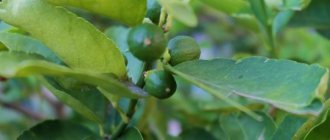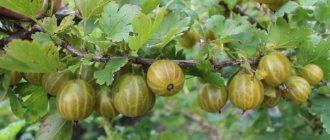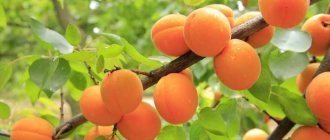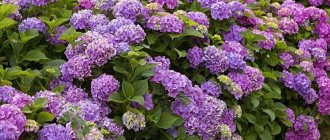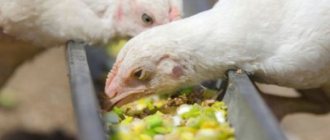Fruits and berries » Grapes
0
1539
Article rating
Kira Stoletova
For an experienced gardener, growing grapevines is not a difficult task. The longevity of this plant allows you to take the right actions to obtain a generous harvest. But there are times when the grapes do not bloom. Then the cause should be identified and care adjusted.
Lack of flowering and fruiting in grapes
How to ensure full fruiting of a crop
In order to answer this question, let’s figure out what factors the process of fruiting a crop depends on and what mistakes can be made when growing it. The full development of grapes, which results in obtaining a high-quality and abundant harvest, depends on several conditions:
- from optimal planting and bush formation;
- dosed application of fertilizers;
- timely treatment of plants with fungicides;
- proper spring pruning.
- compliance with the temperature regime for each variety individually;
Causes of ovary shedding on grapes
Shedding of the grape ovary occurs at different periods:
- After the end of flowering of the vine (the first 2 - 3 days);
- As the fruit reaches a size of 3 - 4 mm;
- Buds with unformed grapes fall off.
Also, the answer to the question of why grapes fall off after flowering may be the natural behavior of the bush. Nature has endowed it with the ability to independently regulate the number of fruits produced. This allows the plant to avoid overcrowding.
Other reasons for grape ovary shedding are:
- The tendency of a certain variety to shed inflorescences;
- Crop immunity weakened by pests or diseases;
- Incorrect structure of flowers (underdeveloped stamens or poor-quality pollen prevent the full fertilization of peduncles and the formation of fruits);
- Imbalance of shoot growth and fruiting of the bush. Intense vegetation does not allow flowering clusters to fulfill their functions;
- Not all female flowers on the raceme are pollinated, causing the empty flowers to fall off.
In addition, there are reasons for grapes falling off after flowering that do not depend on the plant. Either the weather or improper care of the seedlings is to blame. For example, the ovary will not linger on the vine on hot, dry days or when it is damp and cold outside.
By shedding inflorescences, grapes can respond to an abundance of nitrogenous fertilizers and a lack of minerals in the soil. Soil moisture also affects the flowering process of bushes. If there is insufficient watering, the ovary will be of no use.
Errors in planting and determining the timing of fruit appearance
A grapevine planted in the northern part of the garden may develop satisfactorily, but it will not bear fruit; it simply will not have enough light and heat for full development. Grapes are a heat-loving plant; for it you need to choose the southern or southwestern, most illuminated place on your summer cottage.
In addition, the time before fruiting begins varies among different varieties. Some varieties may show signal clusters already in the second year after planting, and winegrowers will be able to evaluate the berries of the planted grapes very early. It will take 3-4 years before other varieties begin to bear fruit. Before deciding what to do with bushes on which no tassels are visible, you should study the characteristics of the variety and its characteristics.
How to make grapes bloom. Why don't grapes bear fruit?
+3
this is the solution
Maybe it's not grapes? In the second year, the grapes already have small tassels, so the rule is that for three years all the bunched tassels are removed so that the bush itself becomes stronger. The harvest begins in the 4th year. True, my wife and I were greedy at one time and in the third year we left a little - well, a couple of three per bush - to see what we liked. I would advise you to remove everything, dig holes according to the rules and fill them with layers of fertilizer, buy or ask your friends for layering in the fall - you can try them in the fall and choose the ones you like and plant them with confidence. You’ve already lost five years, put it away and in 3 years everything will be top-notch. I don’t think my friends will refuse - anyway, in the fall everything is cut off and disposed of, people just stupidly go to the market and buy an unknown one with unknown taste qualities - but I tried it and chose it according to my taste.
Violations committed in the dosage of fertilizing
If the bushes are “overfed” by applying nitrogen-containing fertilizers, the plant itself begins to develop intensively - leaves and branches grow luxuriantly, and the number of flowers and ovaries will decrease, and fewer fruit clusters will form. In addition to the reduction in yield, other important plant abilities are weakened: cold resistance, resistance to various types of diseases. The first sign of increased nitrogen content in the soil is the accelerated growth of young shoots. They will not have time to ripen before the onset of cold weather, and the bush will not survive winter frosts.
When fertilizing with fertilizers, consider the advice of professionals:
- It is advisable to apply organic fertilizers in the fall, while simultaneously reducing the amount of nitrogen fertilizers in the spring cycle by 50%.
- In spring and early summer, two additional feedings are also performed with a complex preparation: before flowering, before the plant sets fruit,
- after the berries have set.
It is worth adding that with proper feeding, the flowers and ovaries will stop falling off en masse, the berries in the bunch will ripen evenly, and the shape of the grapes will be the same.
Growing methods
There is a separate classification for grape seedlings, basically it distributes the plant by “year of life”. Thus, a branch of grapes can be grown directly in the year of planting, and also be older - one-year-old, two-year-old and three-year-old. It is not recommended to replant older seedlings, since their root system is already strong and can be damaged when transferred from one place to another. As a result, planting will not be successful, especially if the grapes never take root.
The methods of growing grapes are as follows.
Chinese layering
In early spring, the vine sleeve is dug into the ground in the area chosen for planting, with its upward position slightly higher than the soil. Grape sleeves are perennial branches formed over the years of the vine’s life, in other words: shoots of an adult plant. Over the summer period, the seedling should take root in a new place, and small shoots should appear from the buds of the sleeve, forming vines that take root around the planting.
During the summer period, the seedling should take root in a new place
A year later, also in spring, the sleeve divides exactly between the ingrown shoots. The vines that have taken root are dug up and transplanted to a new location. In fact, in the first spring, the gardener creates a kind of “nest” in which young shoots of grapes are formed, and the sleeve in this case acts as a mother, feeding and strengthening future vines.
The Chinese method of layering is one of the best for beginning gardeners who do not plan to plant a whole vineyard and grow berries for personal needs. Moreover, it is very reliable, because next spring, with good care, the sleeve will once again sprout, allowing you to renew a small plantation.
It all starts with a chubuk (a small stem with 2 or 3 eyes). Chubuk is planted in a small container with fertile soil. Many gardeners make the mistake of using a flower pot or other wide container as a container. The ideal option for planting chubuk would be a plastic bottle.
Making your own container for grape sprouts is quite simple. You need to take 2 plastic bottles with a volume of 1.5 liters or more. The top of the first bottle is cut off, and the bottom is pierced with a screwdriver (or another sharp object, such as a nail or awl) to create holes through which excess water will leave the bottle.
And fill the remaining container with soil. It is recommended to use a mixture: sand, earth, coarse slag - all porous materials that will not allow moisture to linger for a long time, moistening the soil. Another common mistake is to use humus and rich soil such as clay. Humus is considered the best choice for planting because, not only does it retain heat, but it is also oversaturated with fertilizers.
We invite you to read: Amur velvet: medicinal properties
After planting, the seedling must be watered with heated water and covered with a second bottle. The second bottle is cut off at the bottom, after which it is put on the upper edge of the first. This will maintain a moist environment for the top of the shoot. It is very important not to forget to unscrew the lid, since air will stagnate inside and the seedling will die from the accumulated moisture.
The designed container cannot be exposed to direct sunlight; it must be placed in a bright place where the temperature does not fluctuate. For example, in a greenhouse. The upper “roof” is removed immediately after the seedling produces its first shoots. It is necessary to water as the soil dries out, and a mature seedling can be planted only at the end of June, when the soil is sufficiently warmed by the summer sun.
There is a similar method, developed by Professor Radchevsky: the lower roots of the chibouk plant are “planted” in water saturated with stimulants for root growth, after which the seedlings are planted in containers. However, this method is not only time-consuming, but also requires careful care. Grapes release harmful substances into the water that prevent collus from growing, thereby poisoning both the water and themselves. The water needs to be changed frequently, and this is quite tedious. In addition, planting with bottles gives a higher percentage of surviving plants.
Planting in the soil
Chubuki can also be planted directly into the soil. Before planting, it is recommended to soak the grape stem in water for 24 hours, and then bury it completely in the soil at a slight slope. The soil should be slightly loose, light and well dug. This planting is preferable in the fall.
You can plant chibuki directly into the soil
In spring, direct planting can be done in a similar way. The chubuk needs to be soaked in snow water (to melt the snow that has not yet melted) and wait until the first buds appear. Dry chibouk will thus restore the internal moisture balance and will be ready to grow. After this procedure, it also needs to be completely buried in the ground when planting.
Of course, regular planting for this plant is also possible, but you need to come up with a way to maintain moisture inside the shank. To do this, create a kind of small greenhouse on top of the sprouts, protecting them from the wind and sun. Small staples are dug in near the seedling, after which a covering material - film or insulating fabric - is stretched over it. Thus, a kind of warm air cushion is formed inside, without moisture evaporating, which allows the chibouk to open its buds.
This method is worthy of mention, but is not used by gardeners who do not plan to start a huge grape plantation. A grape seedling is grown from one bud.
Incorrect pruning of grape vines
If you notice that the grapes are not bearing fruit, check whether the vines were pruned correctly. In most grape varieties, the “fruiting eyes” from which young fruit branches develop are located from the 4th to the 8th bud. In some varieties they start only from 8-10 or from 12-14 (Talisman, Muscat amber). Not knowing the characteristics of the variety, novice winegrowers cut off the fruit shoot by 8-10 eyes, while simultaneously reducing the future harvest, leaving weak bunches. By the way, when tying grapes vertically instead of horizontally, a similar result is also obtained: the number of fruits set is significantly reduced.
Overview of possible problems
Strictly follow the agricultural techniques of growing plants, then you will reap an excellent harvest.
Grapes love warmth and good lighting, so they are given a place located in the south or southwest. If a plant lacks warmth and light, it may not bloom. Also, grapes may not bloom if the air has excess humidity due to a huge amount of rainfall.
Another reason is too much fertilizer applied. Then the vine grows many branches and foliage, but no buds.
You also need to carefully examine the grapes to understand that they did not freeze in winter, or that the gardener did not cut off the eyes from which fruitful shoots grow during formative pruning.
If the buds open but there are no berries, then most likely the variety needs pollinators.
There are several unfavorable factors affecting crop growth. Main reasons:
- Excess fertilizing. When the soil is oversaturated with nutrient mixtures, plant growth slows down. Fertilizers must be applied according to a certain system. Choose fertilizers intended for grapes and comply with the terms and conditions specified by the manufacturer. Oversaturated soil with nutrient mixtures allows the plant to increase its vegetative mass, but does not allow the grapes to bloom and form fruits.
- Incorrect trimming. When pruning fruiting eyes, the plant does not form fruit clusters well. Before the procedure, learn the correct pruning technology.
- Pollination. The predominance of female flowers on a crop prevents the plant from bearing fruit. If the variety does not pollinate, it means that other varieties of grapes need to be planted nearby.
- Freezing. Many varieties are not adapted to harsh winters. If there is insufficient winter shelter, the fruiting eyes freeze slightly. In spring, shoots damaged by frost are cut to the ground. The procedure will help stimulate the plant to grow and form berries.
- Not enough nutrients. With insufficient fertilization, the plant slows down its growth, the leaves become small, limp and, as a result, fall off.
Determining the cause in time will allow you to take the necessary measures to obtain a bountiful harvest.
Why do peas occur in grapes? Gardeners unanimously say that this process is influenced by more than one factor. Experienced winegrowers identify the following main reasons:
- Pollination deficiency.
- Heavy load on the vine.
- Lack of moisture and fertilizing.
- Features of the variety and unsuitable climatic conditions.
Lack of pollination
The most common reason for the formation of small grape fruits. Bisexual varieties, in which long and straight pistils and stamens are present, are self-pollinating. Female flowers, which have short and curled parts for reproduction, require pollinating insects.
The harvest is exposed to peas due to the following factors:
- Bees are not attracted to shrubs.
- High temperatures and drought dry out the pollen, which is easily blown away by the wind.
- A large number of female inflorescences that require pollinators.
- The shrub is planted in a place where various objects (fence, wall, trees) interfere with the process of pollination by wind.
- Pollen is washed away in the rain.
In the case when the plant has formed a large number of shoots, a lot of foliage and fruit ovaries are formed. This amount of vegetation overloads the vine, resulting in crop failure.
As for an adult shrub, the exchange of water and nutrients inside the plant is disrupted. Therefore, flowers and ovaries do not receive proper nutrition.
The plant feels comfortable and develops well in moist soil. To prevent the soil from drying out, you must:
- Systematically water the bushes.
- Monitor the condition of the soil.
- Loosen the soil around the crop.
If the summer is hot and dry, the shrubs require abundant watering - 8-10 times per summer will be enough.
Vineyard specialists recommend studying the variety before cultivating any variety of this crop. The description often indicates the tendency of the variety to such a nuisance as peas. Of course, careful care of the shrub will increase the yield, but you shouldn’t count on it too much.
In recent years, breeders have developed many unpretentious hybrid varieties. For example, Arcadia and Augustine produce an inferior harvest only if the plant is not cared for.
Do not forget that representatives of the crop bear fruit well when planted in well-ventilated areas with plenty of sunlight.
If it rains during the flowering period, the pollen will be washed away, and the result will be tiny berries. Opposite climatic conditions (high air temperature and lack of precipitation) will also harm the grapes. In this case, the pollen on the inflorescences dries up and cannot attach to another flower for pollination.
Dependence of fruiting on the frost-resistant qualities of the variety and good shelter
When purchasing a varietal plant, pay attention to the frost-resistant qualities of the grapes. In the future, you will need to cover the vine for the winter and open it in time after spring frosts. If there is insufficient shelter, first of all, fruit-bearing shoots die, and the grapes do not bear fruit. Growing new branches are not very fruitful.
If you discover in the spring that the grapes have frozen slightly, you must first assess the degree of damage to the bush in this order:
- First, the fruiting eye on an annual shoot is cut lengthwise. A frost-damaged eye will be brown in color, unlike a healthy green one.
- Then the bark of the vine is cut. Frozen internal wood tissue will also be brown in color.
To restore frost-damaged grapes during spring pruning, damaged shoots are removed completely, down to the base. This stimulates the formation of new replacement buds and shoots.
Prevention measures
Preventive measures make it possible to prevent a decrease in yield in advance:
- In the fall, when the harvest is harvested, you need to ensure that there are no residues to prevent rotting and frostbite.
- When the leaves fall from the vineyard, be sure to dig up the ground around it at a distance of 1 m. This will not only improve air access to the roots, but will also destroy the pest larvae that have taken refuge for the winter.
- In the spring, before growth begins, use insecticides in preventative doses.
- Throughout the entire growth period, make sure there are no weeds; pests can hide in them.
- Monitor the condition of leaves, shoots, flowers, berries, cut off damaged ones, and begin fighting pests and diseases as soon as they are detected.
As you can see, in order to get a grape harvest, not much effort is required. The main thing is to choose a suitable place for the vineyard, avoid mistakes in caring for it, do not overdo it with watering and fertilizing, protect it from frost, insects, diseases, and take into account the characteristics of the variety. We hope that our help will give you the opportunity to please yourself and your loved ones with delicious juicy berries.
Reasons for the lack of fruiting of bushes with female flowers
One of the reasons why grapes do not bear fruit is the female type of flowering of the plant. For good pollination of flowers of these species, it is important to plant other grape varieties nearby. In the absence of planting, pollination occurs poorly, few ovaries are formed, and the harvest will be small. Artificial pollination of grapes should be carried out using pollen from simultaneously flowering varieties. The process is performed in cloudy weather or early in the morning if the day is expected to be sunny. Pollination is carried out repeatedly - 2-3 times during flowering:
- for the first time at the beginning of flower blooming,
- the second - a few days after the first pollination,
- the third time is carried out in the final phase of the mass flowering period.
Experienced gardeners speak favorably of using the raisin grape variety as a pollinator. From the above it follows that in order to organize abundant fruiting it is necessary to strictly follow certain rules:
- Before planting a variety, study its characteristics, read the relevant literature, and familiarize yourself with the experience of professional winegrowers.
- Correctly form a bush of 1-3 sleeves.
- Fertilize the grapes and treat them with fungicides in a timely manner and strictly according to the instructions for the product.
- Follow growing technology.
- When planting seedlings with female flowers, plant 2-3 other varieties of grapes of the same height nearby for pollination (for example, all tall). This planting ensures equal illumination of the bushes.
- Regularly standardize shoots and the number of ovaries, depending on the crop variety, and thin out the bushes.
- Pinch grape varieties prone to dropping flowers and ovaries.
- It is good to cover the grapes.
Try to strictly follow the technology of growing grapevines, and your efforts will be crowned with a wonderful, abundant harvest.
Article Rating
Buffalo leafhopper on grapes
Grape berries also dry out due to the buffalo leafhopper, which causes irreparable harm to the bush. If earlier it was noticed on fruit trees: apple trees, pears, plums, peaches, apricots, then recently it has begun to cause trouble for winegrowers.
The pest, feeding on the sap of the plant, makes characteristic ring-shaped lesions on the shoots. Because of them, the berries do not receive enough nutrition and dry out, and the shoots wither and die. In addition, the female leafhopper lays her eggs on young shoots so that nodules (swells under the bark) form on them. Vines with such damage must be removed.
How to deal with buffalo leafhopper
The insect gives birth once per season. In the larval stage, the pest lives and feeds on herbaceous plants under grape bushes. An adult insect moves onto the vine and begins to harm it.
If you do not fight the buffalo leafhopper, then in a few years the grapes will die.
You can catch an adult insect, but this is not easy, because it is very agile and sees well. It is easier to catch it at 4-5 am, when the pest is least active. This is usually done after the berries have ripened.
To make the leafhopper larvae less likely to survive, it is advisable to keep the soil under the bushes clean and dig up the area in the fall. You can also plant onions or garlic next to the vine, which repel insects.
In June, with an interval of 10 days, double spraying with an insecticide (Aktara, Fufanon-Nova, Kinmiks, etc.) is carried out. It is necessary to process both the grapes and the grass under them and nearby trees and shrubs. Regular weeding is also a good prevention of pest occurrence.
Grapes dry out for other reasons. The plant may be infected with fungal infections such as mildew, anthracnose or verticillium. There is also crest paralysis, the causes of which are unknown. Fruits can also dry out due to mechanical damage, drought, and improper gartering of bunches for support.
Top 5 most dangerous grape diseases Information that every beginning winegrower should know.

